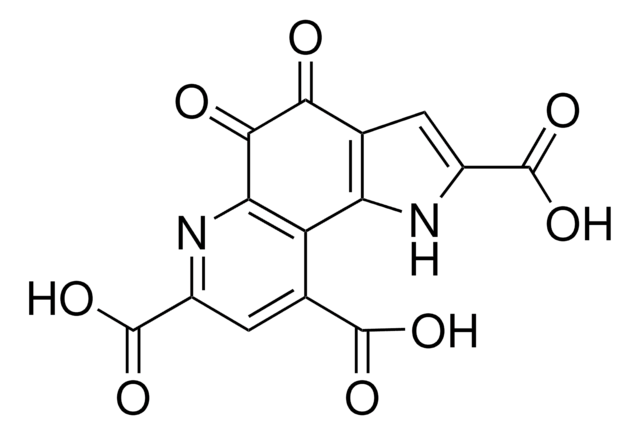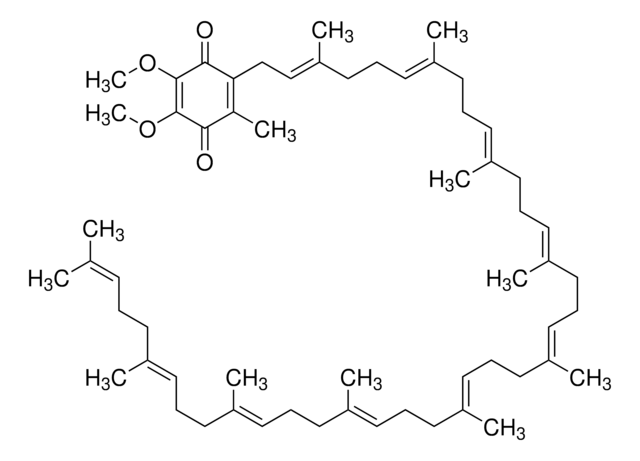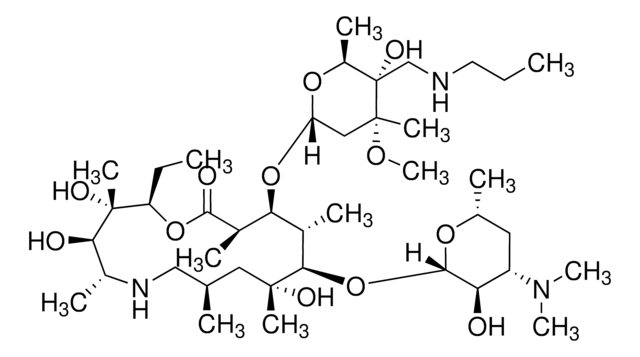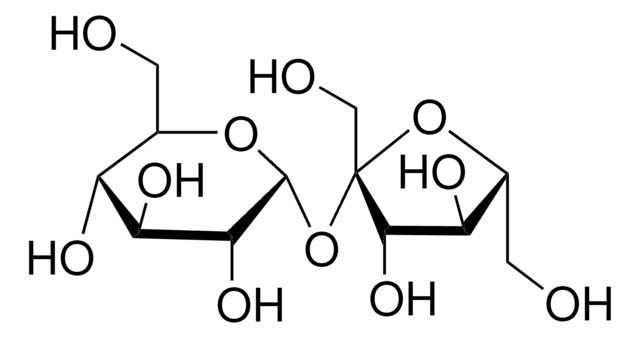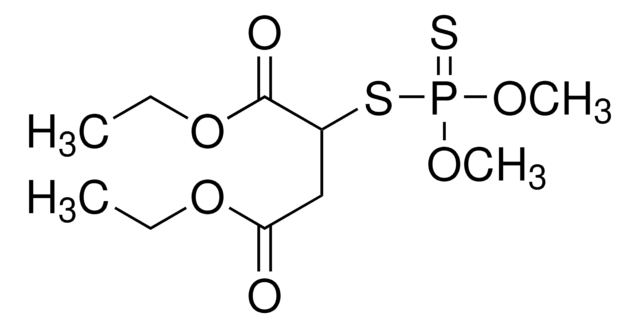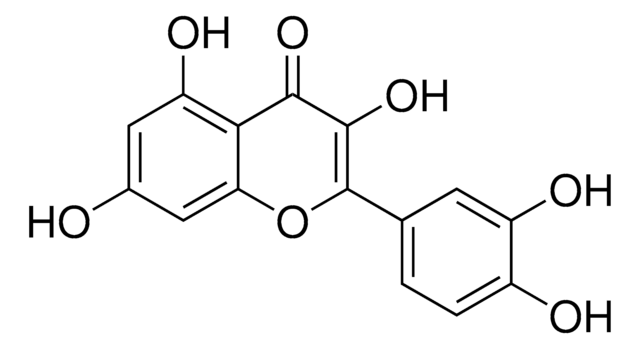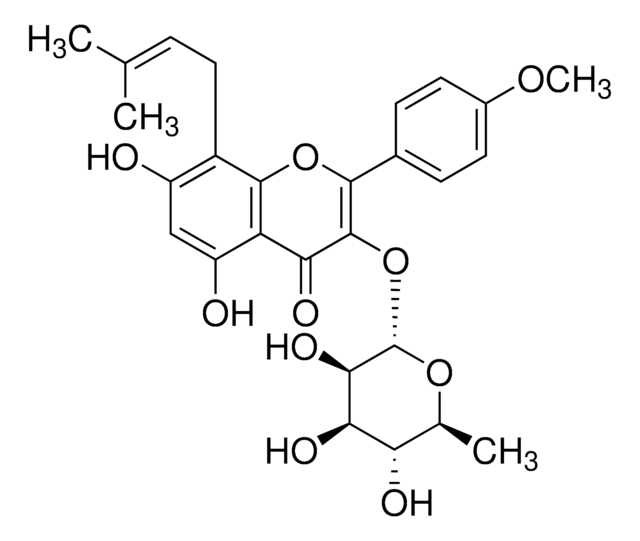80198
Methoxatin disodium salt
≥97.0% (HPLC)
Synonym(s):
PQQ, Pyrrolo-quinoline-quinone disodium salt
About This Item
Recommended Products
biological source
fermentation/recombinant
Quality Level
Assay
≥97.0% (HPLC)
form
powder
color
red-brown to deep orange
red-brown to deep red-brown
storage temp.
2-8°C
SMILES string
OC(=O)c1cc(nc2C(=O)C(=O)c3cc([nH]c3-c12)C(=O)O[Na])C(=O)O[Na]
InChI
1S/C14H6N2O8.2Na/c17-10-4-2-6(14(23)24)15-8(4)7-3(12(19)20)1-5(13(21)22)16-9(7)11(10)18;;/h1-2,15H,(H,19,20)(H,21,22)(H,23,24);;/q;2*+1/p-2
InChI key
UFVBOGYDCJNLPM-UHFFFAOYSA-L
General description
Application
- Safety assessment of a novel, dietary pyrroloquinoline quinone disodium salt (mnemoPQQ): This study investigates the safety profile of Methoxatin disodium salt, which has implications for its application in assay development for clinical and diagnostic purposes. Specifically, it addresses the compound′s use in dietary supplements and potential crossover into clinical assays where safety and toxicity are paramount (Shiojima et al., 2022).
Biochem/physiol Actions
Storage Class Code
11 - Combustible Solids
WGK
WGK 3
Flash Point(F)
Not applicable
Flash Point(C)
Not applicable
Personal Protective Equipment
Choose from one of the most recent versions:
Already Own This Product?
Find documentation for the products that you have recently purchased in the Document Library.
Which document(s) contains shelf-life or expiration date information for a given product?
If available for a given product, the recommended re-test date or the expiration date can be found on the Certificate of Analysis.
How do I get lot-specific information or a Certificate of Analysis?
The lot specific COA document can be found by entering the lot number above under the "Documents" section.
How do I find price and availability?
There are several ways to find pricing and availability for our products. Once you log onto our website, you will find the price and availability displayed on the product detail page. You can contact any of our Customer Sales and Service offices to receive a quote. USA customers: 1-800-325-3010 or view local office numbers.
What is the Department of Transportation shipping information for this product?
Transportation information can be found in Section 14 of the product's (M)SDS.To access the shipping information for this material, use the link on the product detail page for the product.
What solvents can be used to reconstitute Product 80198, Methoxatin?
Product 80198, Methoxatin disodium salt is soluble in water up to 3 mg/ml. The following reference by Zimmerman, L.B. et al., Analytical Biochemistry, 411 (2), 194-199 (2011) has solubilized the product in 250 μM in HEPES buffer (20 mM, pH 7.0, 290 mOsmol/kg).
My question is not addressed here, how can I contact Technical Service for assistance?
Ask a Scientist here.
Our team of scientists has experience in all areas of research including Life Science, Material Science, Chemical Synthesis, Chromatography, Analytical and many others.
Contact Technical Service